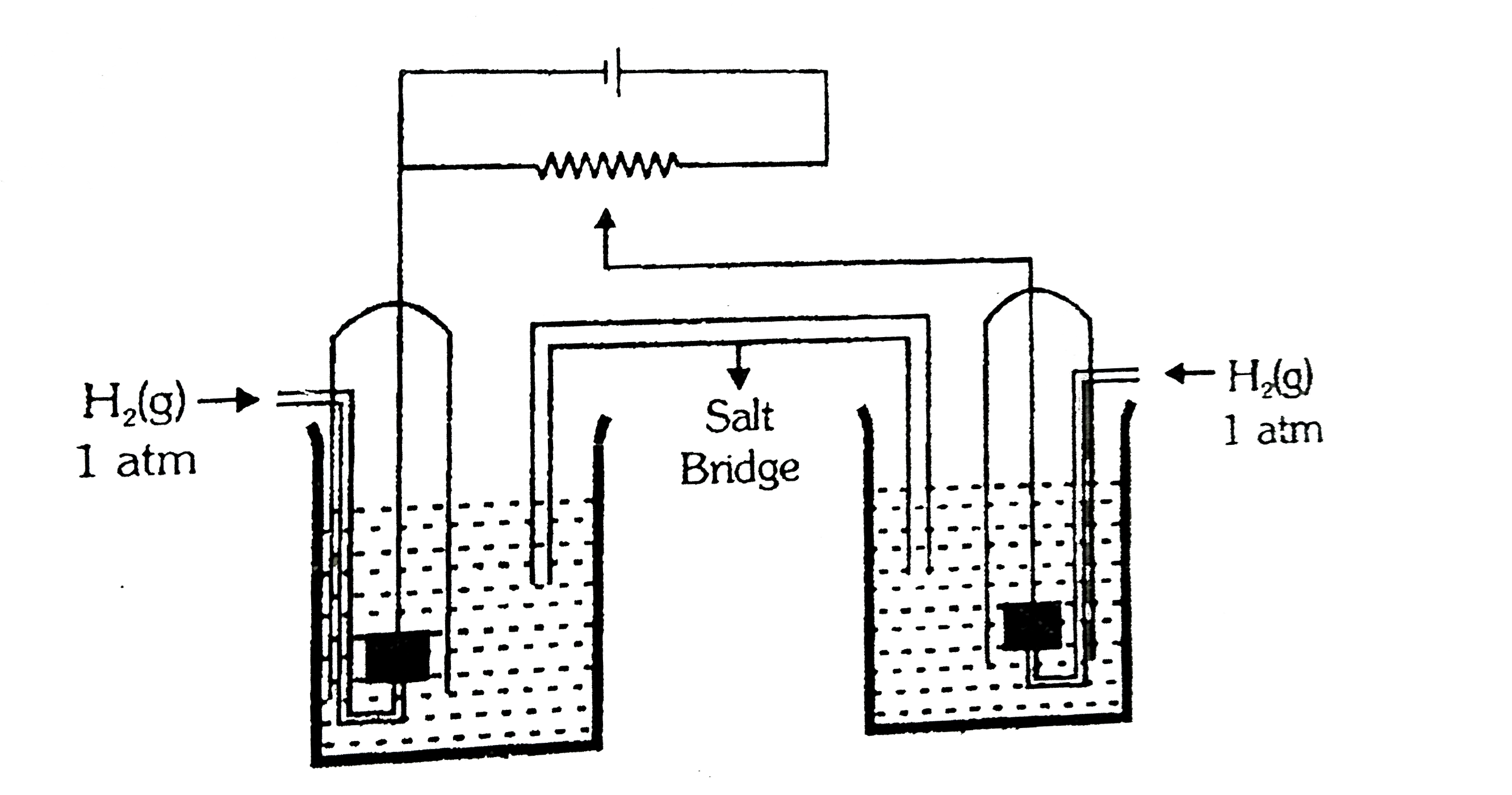% hydrolysis of 0.1M CH3COONH4, when Ka(CH3COOH)=Kb(NH4OH)=1.8×10−5 is:
0.55
7.63
0.55×10−2
7.63×10−3
To calculate the percentage hydrolysis of 0.1 M CH₃COONH₄, we will follow these steps:
Step 1: Identify the Constants
We know that:
- Ka (for acetic acid, CH₃COOH) = 1.8×10−5
- Kb (for ammonium hydroxide, NH₄OH) = 1.8×10−5
- Kw (ion product of water) = 1.0×10−14
Step 2: Use the Hydrolysis Constant Formula
For a salt formed from a weak acid and a weak base, the hydrolysis constant Kh can be calculated using the formula:
Kh=KwKa⋅Kb
Step 3: Substitute the Values
Substituting the known values into the formula:
Kh=1.0×10−14(1.8×10−5)⋅(1.8×10−5)
Step 4: Calculate Kh
Calculating the denominator:
(1.8×10−5)⋅(1.8×10−5)=3.24×10−10
Now substituting this back into the equation for Kh:
Kh=1.0×10−143.24×10−10≈3.09×10−5
Step 5: Calculate the Hydrolysis Concentration
The concentration of hydrolyzed species can be calculated using:
H=√Kh⋅C
Where C is the initial concentration of the salt (0.1 M):
H=√3.09×10−5⋅0.1=√3.09×10−6≈0.00176M
Step 6: Calculate the Percentage Hydrolysis
The percentage hydrolysis can be calculated using:
Percentage Hydrolysis=(HC)×100
Substituting the values:
Percentage Hydrolysis=(0.001760.1)×100≈1.76%
Final Answer
The percentage hydrolysis of 0.1 M CH₃COONH₄ is approximately 1.76%.
---
We know that:
- Ka (for acetic acid, CH₃COOH) = 1.8×10−5
- Kb (for ammonium hydroxide, NH₄OH) = 1.8×10−5
- Kw (ion product of water) = 1.0×10−14
For a salt formed from a weak acid and a weak base, the hydrolysis constant Kh can be calculated using the formula:
Kh=KwKa⋅Kb
Substituting the known values into the formula:
Kh=1.0×10−14(1.8×10−5)⋅(1.8×10−5)
Calculating the denominator:
(1.8×10−5)⋅(1.8×10−5)=3.24×10−10
Now substituting this back into the equation for Kh:
Kh=1.0×10−143.24×10−10≈3.09×10−5
The concentration of hydrolyzed species can be calculated using:
H=√Kh⋅C
Where C is the initial concentration of the salt (0.1 M):
H=√3.09×10−5⋅0.1=√3.09×10−6≈0.00176M
The percentage hydrolysis can be calculated using:
Percentage Hydrolysis=(HC)×100
Substituting the values:
Percentage Hydrolysis=(0.001760.1)×100≈1.76%
The percentage hydrolysis of 0.1 M CH₃COONH₄ is approximately 1.76%.
Topper's Solved these Questions
Similar Questions
Find pH of 0.1 M CH3COOH(aq) solution K (CH3COOH)=10−5
View SolutionCarefully observe the given figure and using data provided find the EMF of shown Galvenic cell in volt:

Solution A is 0.1M each in NH4OH and NH4CI and solution B is 0.1M each in CH3COOH and CH3COONa+.
[Given: Ka(CH3COOH)=10−5,Kb(NH4OH)=10−5 and 2.303RTF=0.06 volt]
View Solution
Knowledge Check
The pH of an aqueous solution of 0.01 M CH3COONH4 at 25∘C is (Ka(CH3COOH)=Kb(NH4OH)=1.8×10−5)
A>7B<7C7D8pH of a solution of 0.1 M [CH3COONH4(aq)] is [given:Ka(CH3COOH)=Kb(NH4OH)=1.8x10−5)]
A1B9C7D13Both conc. Being 1 M, the factor by which the percent hydrolysis of CH3COO− is greater in CH3COONH4 than in CH3COONa is :
[Ka(CH3COOH)=Kb(NH4OH)=1.8×10−5]A236B136C36D3
Calculate the extent of hydrolysis & the pH of 0.02 M CH3COONH4.
[Kb(NH3)=1.8×10−5,Ka(CH3COOH)=1.8×10−5]
View SolutionWhat is the concentration of CH3COOH(aq.) in a solution prepared by dissolving 0.01 mole of NH+4CH3COO− in 1 L H2O? [Ka(CH3COOH)=1.8×10−5),Kb(NH4OH)=1.8×10−5]
View SolutionIn a solution containing 0.02MCH3COOH and 0.01MC6H5COOH. If KCH3COOH and KC6H5COOH are 1.8×10−5and6.4×10−5 respectively, then calculate the pH of solution.
View SolutionWhich of the following cell can produce maximum electrical work?
[Given:PH2=1atm,Ka(CH3COOH)=Kb(NH4OH)=10−5]
View SolutionCalculate the pH of a solution containing 0.1 M CH3COOH and 0.15 M CH3COO−.
(KaofCH3COOH=1.8×10−5)
View Solution
